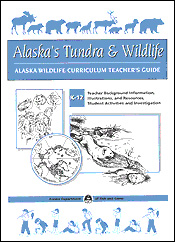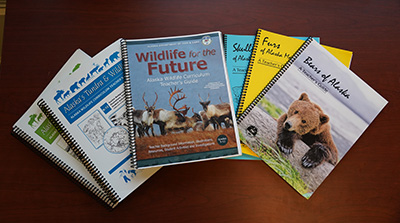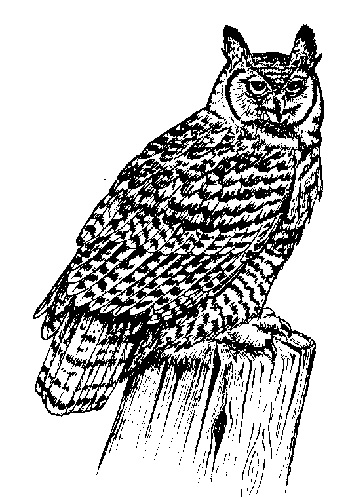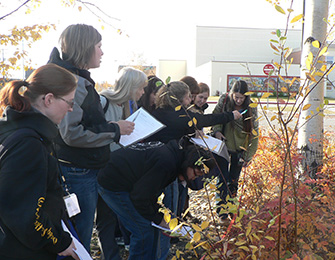Alaska Fish & Wildlife News
August 2019
The Alaska Wildlife Curriculum

As a member of the Alaska Department of Fish and Game’s wildlife education program I was asked to share the department’s education resources with a group of new teachers. One teacher shared the following lament: “You know, the curriculum from the school district is okay, but I wish I had something that was more about Alaska. We’re different.”
“Well, I may have just what you’re looking for,” I said. “It’s called the Alaska Wildlife Curriculum.” I offered her one of the five volumes, and after a cursory looks she was excited to dig in.
“This is so relatable for our students,” she said. “How do I get copies?”
I explained that this is one of the many resources for teachers, parents, camp counselors and others available for free download from our website. No registration, and no commitment to purchase, just free to use and widely available to any educator or student.
Fish and Game has been helping teachers for decades. In the 1990s, “Wildlife Week” was created; through a grant, teachers received a packet of posters, lessons, film strips and other materials to create a week-long focus on wildlife as a theme for science and social studies lessons. The call for these materials was overwhelming across the state. Soon the decision was made to create a series of curriculum guides since there is so much to cover for a state our size. We knew the resource would need to be all about Alaska or “place-based.” It had to be adaptable, aligned to state and national learning standards, easy to use, and relevant to the diversity of biomes here in Alaska.

The result was the Alaska Wildlife Curriculum, which includes the guides Alaska’s Forests and Wildlife, Alaska’s Tundra and Wildlife, Alaska’s Wetlands and Wildlife, Alaska’s Ecology, and the recently updated Wildlife for the Future. The Alaska Wildlife Ecology Cards complement the guides; this is a set of 270 illustrated species and ecosystem components by Alaskan artist Conrad Fields. On the back you’ll find the name, foods, predators, an FTW (forest, tundra or wetland), traits, habitat and some short facts. These cards have 100+uses and are also free to download.
Each volume employs a multi-disciplinary approach to learning where students are actively performing a skills appropriate activity making it very hands-on and fun. Educators can engage vocabulary, reading, math, social studies and of course science. Physical education teachers use lessons that are active and engage the environment. The materials list and step-by-step instructions are standard in most educational resources, but what makes the AWC unique is the expanded background content added to each guide. Educators can come up to speed quickly on a topic they may not be versed in, helping them to feel more confident in leading a lesson so students stand to gain the greater benefits. Couple this resource with one of our professional development offerings and teachers leap forward in helping our students understand their home, especially teachers that are new to Alaska.

After teachers participate in an ADF&G professional development opportunity, part of their assignment is to adapt and teach a lesson in their classroom. Juneau teachers were learning about wolves in their area and using activities in the Wildlife for the Future guide. Here they were estimating populations, understanding predator prey encounters and population dynamics.
“This is the most useful math I’ve ever done,” said a Juneau high school student, “because I can understand it.” This guide helps teachers answer the question, “Why do I need algebra?” And, ‘Why do Alaska students need to understand their environment?’
Alaskans rely so heavily upon our natural resources, and whether you’re mining, hunting with a firearm or a camera, trying to start your car, or fight the mid-winter blues, you benefit from understanding the nature of our nature. Without that base of knowledge and competency, how will we make informed decisions in the public processes that direct our future? The resources to help prepare our students to be healthy, educated and engaged Alaskan citizens is now at your fingertips on our website:http://www.adfg.alaska.gov/index.cfm?adfg=curricula.awc

Need more literacy materials? Check out the Alaska Wild Wonders subscription for all Alaska educators, parents and homeschool groups. https://www.adfg.alaska.gov/index.cfm?adfg=educators.wildwonders
And to learn more about our professional development opportunities ‘educator’ and other workshops, see our events calendar: https://www.adfg.alaska.gov/index.cfm?adfg=education.calendar
P.S. If you find a lesson you would like to adapt and print or include in another set of works, don’t forget to check in with Brenda Duty, Wildlife Education Brenda.duty@alaska.gov 907-267-2216
Brenda Duty is the Project WILD and Youth Education Coordinator with the Division of Wildlife Conservation.
Subscribe to be notified about new issues
Receive a monthly notice about new issues and articles.
